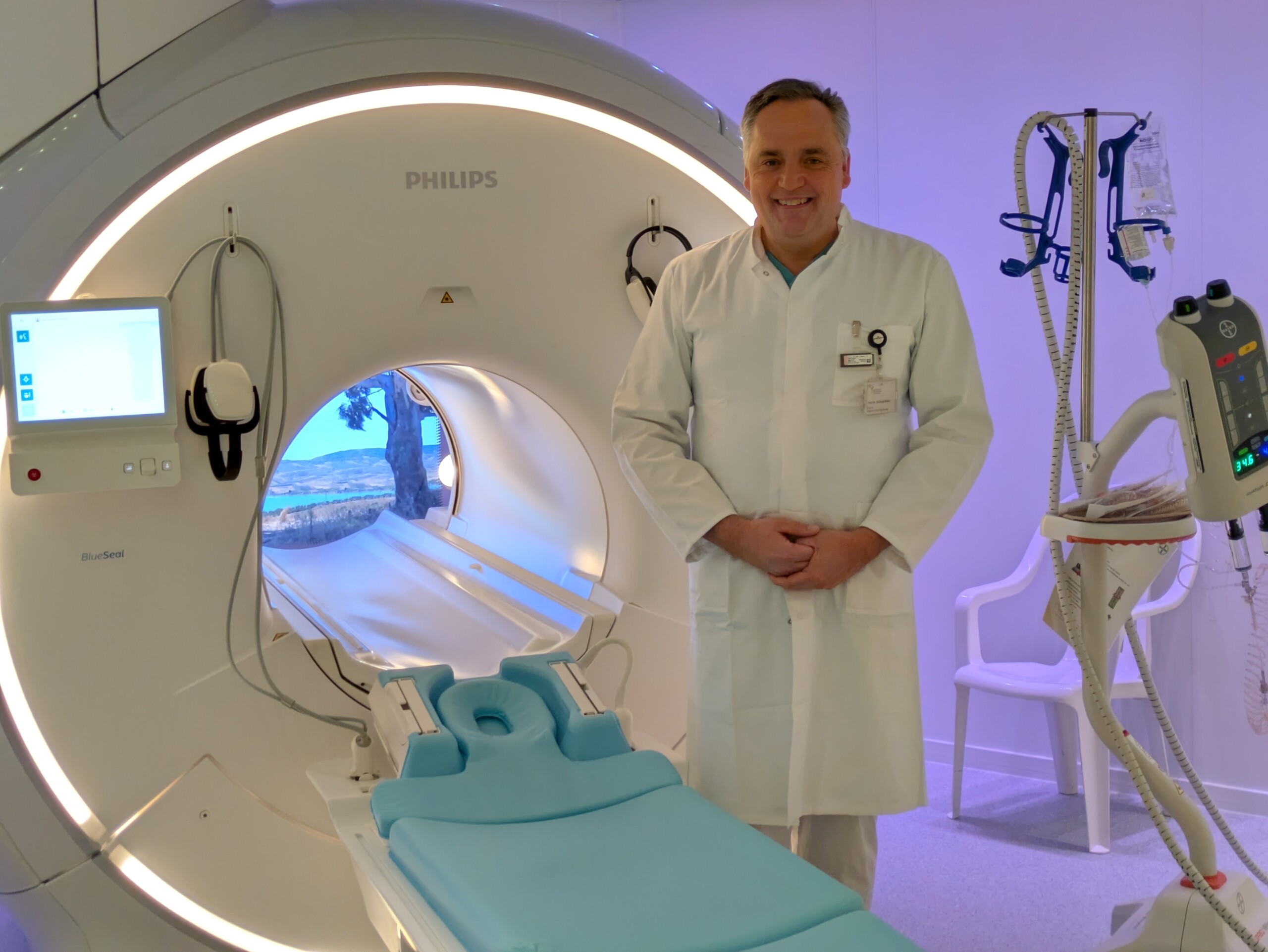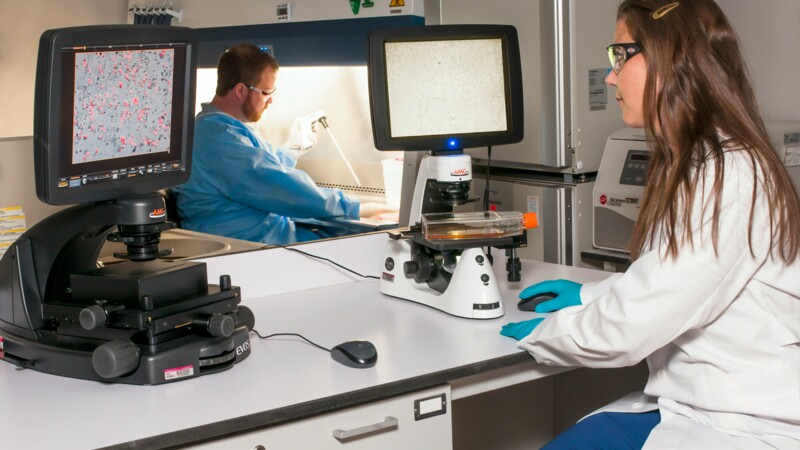The EASK is relying on Philips Healthcare for its investments in computerised tomography (CT) and magnetic resonance imaging (MRI), with an AI-driven innovation. "In February, we put a 128-row computerised tomography scanner into operation, which improves image quality and reduces radiation exposure significantly," said Weber. Thanks to AI-supported image reconstruction, an AI-supported camera leads to more precise and standardised patient positioning, and a lower radiation dose. In the past, more radiation meant more X-ray quanta and a stronger signal, resulting in a clearer and more precise image unlike less expressive images with a lower radiation dose. The AI cleans the result and removes noise or artefacts (imaging errors or image distortions), sharpens edges and improves contrast. "The new CT reduces radiation exposure by 20 to 30 per cent." This progress is all the more important as CT devices are the "workhorses of radiology", said Weber. They are used for everything from stroke diagnostics and assessing bone fractures to detecting tumours.
Imaging procedures are crucial to modern medicine, whether for detecting diseases early, diagnosis, planning treatment or monitoring during convalescence. The importance of non-invasive and thus gentle diagnostics e.g., for imaging coronary vessels is growing rapidly, said Professor Christoph Weber, Senior Consultant at the Evangelisches Amalie Sieveking Krankenhaus (EASK) and Head of the Immanuel Albertinen Centre for Radiology (ACR) in Hamburg. "Around 135,000 diagnostic imaging procedures are carried out every year at our three sites in Hamburg, Berlin and Brandenburg. We need strong industrial partners to provide radiological diagnostics and therapy at the highest level," he said.
Significantly reduced radiation exposure

Low-helium MR operation
The "Ingenia Ambition X" MRI machine, which has been in operation at EASK since October, sets new standards in terms of sustainability, time savings and patient comfort. "The device is based on BlueSeal technology, which means the MR can be operated on low amounts of helium. This rare and valuable gas is used to cool the superconducting magnetic coils. The less helium needed, the more efficient and sustainable the operation." explains Weber. Audiovisual elements, such as light settings, video and image projections, make for an improvd "quality of stay". The MR tube is bigger and the tunnel shorter, which makes it more appealing to patients who dislike confined spaces.
Significantly shorter exam times
However, the new system significantly reduces examination times. "Thanks to modern technology, our examinations are up to three times faster and without compromised image quality." The modern technology is based on "compressed sensing", i.e., reduced measurements. Normally, the more data, the better and the clearer the MRI image. Compressed sensing requires significantly less data, as an intelligent algorithm calculates the missing data reliably. The shorter the stay in the MRI, the lower the risk of artefacts, e.g., because the patient is moving.

AI in everyday practice
Optimised image creation is just one of the pillars of AI in everyday clinical practice, Weber stressed. "AI can speed up the entire radiology workflow." In hospitals, that involves Picture Archiving and Communication System (PACS) and Radiology Information System (RIS), i.e. digital archiving and communication systems. AI can automate such procedures, prioritize findings and co-ordinate appointments. And AI is a valuable support tool when analysing CT, MRI, X-ray or ultrasound examinations. Pattern recognition is considered one of AI's strengths. If a consultant is trying to determine whether the image shows a tumour, an AI algorithm can rapidly and accurately identify structural changes.
AI and doctors physicians
But is AI better than humans? "Merely detecting findings is the first step. They have to be evaluated in the context of the human body's multifaceted complexity," said Weber. Doctors will continue doing such assessments. But AI must be in the hands of doctors. "The doctor uses AI and puts it in the right context to improve patient well-being."
ys/pb
Sources and further information
More
Similar articles

Bernhard Nocht Institute celebrating 125 years of research

UKE advancing digital healthcare

Millions in funding for cutting-edge research in Hamburg
